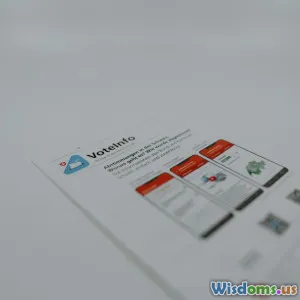
Finding Your Niche in Blogging
7 min read Master the art of finding your blogging niche with actionable insights to build authority and attract loyal readers. (0 Reviews)
Finding Your Niche in Blogging: Unlock Your Unique Voice
Blogging today feels like navigating an incredibly crowded marketplace. With over 600 million blogs online, standing out isn’t a matter of mere luck—it’s a game of strategic focus. The key? Finding your niche. But what does it mean to find your niche in blogging, and how can this crucial step transform your content creation journey from being one blog in millions to becoming an influential voice with a devoted audience?
Why Finding Your Niche Is Crucial
Steph Smith, a celebrated writer on personal growth and career development, once noted, “The more specific your niche, the greater your chances of cutting through the noise.” In essence, establishing a niche means honing in on a specific topic or audience segment where you can provide specialized knowledge, unique insights, or passionate storytelling.
Why is this specificity so important?
- Audience Targeting: Narrowing your focus helps attract readers who are genuinely interested in your content, enhancing engagement.
- Authority Building: A well-defined niche improves your credibility and trustworthiness, positioning you as an expert instead of a generalist.
- Content Strategy Efficiency: When you know your niche well, brainstorming ideas and creating content becomes more natural and less overwhelming.
How to Find Your Blogging Niche
Step 1: Reflect on Your Passion and Expertise
Ask yourself what topics ignite your curiosity and excitement. Genuine enthusiasm shines through in writing and helps sustain motivation over time. Alongside passion, consider your areas of expertise or experiences you can uniquely share.
Examples:
- A travel enthusiast who has traveled to 40+ countries might niche down into budget backpacking tips.
- A software developer might focus on tutorials for open-source tools.
According to HubSpot, blogs that focus on niche topics often have 50% more loyal followers compared to broad-subject blogs.
Step 2: Research Market Demand and Competition
Once you identify a general area of interest, validate if there is a substantial audience for it. Use tools like Google Trends, SEMrush, or Ahrefs to analyze keyword search volume and competitive landscape.
For example:
- If “sustainable living” is your passion, check trends around sustainable fashion, zero waste lifestyles, or renewable energy and see which has a more engaged audience.
Be wary of oversaturated niches. Instead of competing with thousands of established beauty bloggers, a niche like “organic skincare for sensitive skin in dry climates” might better attract a focused audience.
Step 3: Define Your Target Audience
Be as specific as possible. Creating an audience persona helps. Consider demographics like age, gender, occupation, pain points, and goals.
For example:
- Instead of targeting "fitness enthusiasts," aim for "busy moms over 35 looking for 20-minute home workouts."
Such clarity ensures your content is tailored and relevant, enhancing loyalty.
Step 4: Test and Refine Your Niche
Beginners sometimes stumble by picking niches solely for profitability without passion or enough knowledge. Validate your niche by publishing content and monitoring engagement. Use surveys, social media feedback, and comments to understand what resonates.
Real-world insight:
- Michelle Schroeder-Gardner, author of "Making Sense of Cents," started by writing about personal finance, a broad topic, but narrowed her niche to debt pay-off and frugal living, which significantly grew her blog's popularity.
Tips for Thriving Within Your Blogging Niche
- Consistency is King: Regular publishing on your chosen subject builds familiarity and trust.
- Innovate Within Your Niche: Incorporate personal stories, case studies, podcasts, or infographics to diversify content.
- Engage Your Audience: Respond to readers’ comments and questions, creating a community.
- Stay Updated: Keep abreast of trends in your niche to maintain relevance.
Examples of Successful Niche Blogs
- Nomadic Matt — Focuses solely on budget travel, helping readers explore the world inexpensively, generating a dedicated global audience.
- Pinch of Yum — Began as a general food blog, it quickly honed in on approachable, recipe-driven food content that appeals to everyday cooks.
- Smart Passive Income by Pat Flynn — Concentrates on online business and passive income, attracting entrepreneurs who crave not just inspiration but actionable strategies.
These blogs succeeded largely because they stuck closely to their niche while providing unmatched value.
Conclusion: Your Niche Is Your North Star
Finding your niche in blogging isn’t just about picking a trendy topic. It’s a deliberate, insightful journey that aligns your passion with market demand and audience needs. It shapes every blog post, email, and social media update into meaningful communication.
Remember the words of blogging expert Darren Rowse: “Your niche doesn’t have to be perfect; your perfect niche will emerge through your writing and audience interaction.” Start focused, stay curious, and adapt as you grow. In the vast blogosphere, your niche will be the beacon that attracts your tribe, builds your brand, and fuels long-term success.
Take that first step today—define what makes your voice unique, identify who needs to hear it, and craft your niche with intention and confidence.
Rate the Post
User Reviews
Popular Posts




















